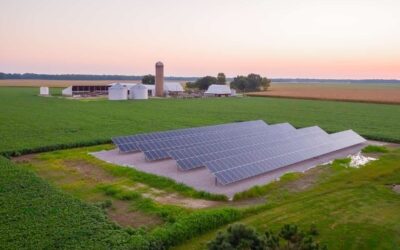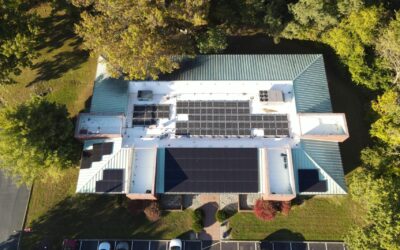On August 16th, President Biden signed the Inflation Reduction Act into law, calling it “one of the most significant laws in our history.” The IRA is the largest climate investment in American history, and includes many energy-related policies. Here, we break down the ones that are most applicable to solar customers.
Residential Solar
We’ll start with residential solar owners. Anyone who has looked into solar before is likely familiar with the Investment Tax Credit, or ITC. Before the IRA was signed, the ITC was set at 26% of the cost of your solar energy system, and scheduled to step down to 22% in 2023 and 0% afterwards. However, the IRA increased and extended the credit for homeowners – to 30% through 2032. This tax credit is a one-for-one offset of your tax liability, which can be captured over a two year period. So if your entire solar energy system cost $50,000, your tax credit value would amount to $15,000. EFS Energy is not a tax advisor, so discuss the ITC with your tax professional before making any financial decisions around the ITC and other tax issues.
The residential 30% ITC can also apply to energy storage (see our last blog post for more information about battery options), for either batteries installed alongside solar PV, or for standalone energy storage projects.
When solar is installed on older homes, sometimes homeowners have to make other home electric upgrades, including main service panels and electric wiring updates. The IRA includes a 30% ITC for energy efficiency home improvements, which can in some cases include service panels and wiring. Additionally, there is a High-Efficiency Electric Home Rebate Program available to households making less than 80% of the Area Median Income (~$66,300 for a family of 4 in St. Louis County).
Non-Residential Solar
For non-residential solar buyers – including commercial, agricultural, nonprofit and municipal entities, there’s even more to dig into with the Inflation Reduction Act. Similarly to residential, the Investment Tax Credit has been extended and increased to 30% of eligible project costs through 2025, with a gradual step down schedule afterwards. Just like residential, standalone energy storage systems can also receive the 30% tax credit under the IRA.
Commercial solar owners can also now choose between the Investment Tax Credit (ITC) and the Production Tax Credit (PTC). The PTC provides an inflation-adjusted payment for every kWh produced from your solar energy system over a ten year period. Currently, the rate would be around 2.6 cents per kWh. EFS Energy can help you compare the benefits of the ITC (tax credit based on total system cost) and PTC (tax credit based on system energy production).
If you’re a nonprofit or government solar customer, usually when the conversation shifts to solar tax credits, it feels like your time to zone out. Though tax-exempt organizations historically have only been able to access ITC benefits through third party ownership structures, under the IRA there is a direct pay option available to tax exempt entities, state governments and political subdivisions, tribal governments and rural electric cooperatives. This opens up huge opportunities for tax exempt entities to access solar in an affordable way via the ITC and PTC.
There are even a few additional opportunities to receive increased incentives by meeting certain standards or for qualifying project types. The first is a Domestic Content bonus credit. Projects that use 100% domestic steel and iron, and 40% domestic manufactured products can receive an additional 10% ITC tax credit or a 10% increase on their per kWh PTC rate.
Solar projects in “energy communities” can also receive the 10% bonus. Under the IRA, “energy communities” include certain brownfield sites, areas where coal mines or coal-fired power plants have closed in the last few decades, and areas that previously had high levels of direct employment or tax revenues from fossil fuel industries, and are currently facing high levels of unemployment.
Finally, projects in qualifying low income communities or on tribal lands can apply for a 10% ITC bonus, and projects that are installed on qualifying low income rental buildings or that economically benefit low income residents can apply for a 20% ITC bonus.
The Bottom Line
As you can see, there’s a lot to navigate with new solar incentives through the Inflation Reduction Act, especially for commercial and community organizations. But that’s where EFS Energy comes in. We provide free, custom designs, quotes and consultations so you can understand your solar options. This includes a financial analysis where we model and explain the incentives you may be eligible for, and help you weigh your financial options.
But the bottom line is that with the passage of the IRA, solar opportunities across the country just got a lot better. While there is still more information and guidance that will be coming down from the state and federal level on how some of these programs will be implemented, the ITC increase is in effect today. Even projects installed in 2022 could be eligible for the full 30% credit – but of course, talk to your tax advisor about it!
The 30% ITC (or direct pay for tax-exempt entities) can help offset a significant portion of your solar project, and combined with other state incentives and net metering policies, can make solar a great option for you. If you want to learn more about your options for saving money on electric bills, increasing your property value and contributing to a cleaner environment, give us a call today.





